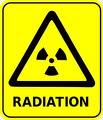Nuclear Power Plants: Understanding Boiling Water Reactor Systems At Fukushima

#sharebar {
PADDING-RIGHT: 0px; PADDING-LEFT: 0px; Z-INDEX: 10; RIGHT: 0px; FLOAT: left; PADDING-BOTTOM: 2px; MARGIN-LEFT: -71px; BOTTOM: 15%; PADDING-TOP: 0px; POSITION: fixed; BACKGROUND-COLOR: #fff; border-radius: 5px; -moz-border-radius: 5px; -webkit-border-radius: 5px
}
#sharebar .sbutton {
CLEAR: both; FLOAT: left; MARGIN: 5px 5px 0px
}
.fb_share_count_top {
WIDTH: 48px! important
}
.fb_share_count_top {
-moz-border-radius: 3px; -webkit-border-radius: 3px
}
.fb_share_count_inner {
-moz-border-radius: 3px; -webkit-border-radius: 3px
}
.FBConnectButton_Small {
WIDTH: 49px! important; -moz-border-radius: 3px; -webkit-border-radius: 3px
}
.FBConnectButton_RTL_Small {
WIDTH: 49px! important; -moz-border-radius: 3px; -webkit-border-radius: 3px
}
.FBConnectButton_Small .FBConnectButton_Text {
PADDING-RIGHT: 2px! important; PADDING-LEFT: 2px! important; FONT-SIZE: 8px; PADDING-BOTTOM: 3px! important; PADDING-TOP: 2px! important; -moz-border-radius: 3px; -webkit-border-radius: 3px
}

A BWR is like a giant pot of boiling water. Water goes through the reactor, is heated by the splitting of uranium atoms, turns to steam and spins a turbine-generator to make electricity. The steam is condensed back to water and pumped back into the reactor to continue the cycle.
Each Reactor, once paid for is a gold-mine for its operators, and all manner of precautions and procedures are in place to reach maximium life for each unit. In March, TEPCO was bemoaning the “Hail Mary” of pumping sea water into the reactors to keep fuel rods from being exposed. They explained that if the rods started melting that the plant would become inoperable, and that is why emergency actions had to be taken. At this point every worker in the global nuclear industry understood that the reactors (aka gold-mine) at Fukushima Daiichi was closed for good.
Once you fill the reactors with water, you are exponentially increasing the weight of each structure, putting more strain on the foundations of each building. With all of the continual earthquake activity and aftershocks, combined with all of the water being pumped into each building, the ground around the foundations of the reactors is at increased risk of liquification.
The purposes of the reactor vessel assembly are:
- House Reactor Core
- Serve as part of reactor coolant pressure boundary
- Support and align fuel and control rods
- Provide flow path for circulation of coolant past the fuel
- Remove moisture from the steam exiting the core
- Provoide refloodable volume for loss of coolant accident
There are 3 basic barriers to the release of radiation:
If 2 of these 3 are compromised, and the third is in jeopardy, US plants will advise shelter or evacuation of nearby residents.
- the metal clad that encases the uranium fuel,
- the reactor pressure vessel,
- The containment.
The reactor operates at a normal pressure of about 1000 psig.
During an earthquake of this magnitude, the reactor would be expected to automatically shut down (called a reactor scram). Control rods are hydraulically driven into the core in less than 7 seconds. Only recently has the word “Scram” come up in TEPCO reports, but even if the referenced scram did occur, it did not prevent the cores from melting, so was ineffective.
This chart was released by TEPCO at the beginning of May, logging the earthquake + scram
If the control rods were ever inserted, and how far they were inserted is still in question.
Even with rods inserted, the reactor continues to produce heat equivalent to about 3% of its full power level. Even after the rods are inserted there are still some atoms splitting and fission products decaying that produce heat. This drops off slowly and is why there needs to be layers of redundant cooling with backup power.
The reactors at Fukushima Daiichi have several back up diesel generators that supply power to motor driven cooling systems that will supply high flow of water up to about 300 psig. There are also steam driven systems to supply cooling water up to 1100 psig. There are also pressure relief systems that active at about 1100 psig. If reactor pressure gets too high, relief valves open and discharge steam to a water filled pool inside the containment.
The high pressure coolant injection (HPCI) system is an independent emergency core cooling system requiring no auxiliary ac power, plant air systems, or external cooling water systems to perform its purpose of providing make up water to the reactor vessel for core cooling under small and intermediate size loss of coolant accidents. The high pressure coolant injection system can supply make up water to the reactor vessel from above rated reactor pressure to a reactor pressure below that at which the low pressure emergency core cooling systems can inject.
The low pressure emergency core cooling systems consist of two separate and independent systems, the core spray system and the low pressure coolant injection (LPCI) mode of the residual heat removal system. The core spray system consists of two separate and independent pumping loops, each capable of pumping water from the suppression pool into the reactor vessel. Core cooling is accomplished by spraying water on top of the fuel assemblies.
The low pressure coolant injection mode of the residual heat removal system provides makeup water to the reactor vessel for core cooling under loss of coolant accident conditions.
Questions to be answered
- Are all rods fully inserted?
- What are water levels, and is and of the water actually reaching and cooling the melted cores.
- What injection systems are available?
- What are reactor pressures?
- What is the status of containment?
- Where are all the General Electric and Siemens Engineers giving detailed explanations of nuclear power plants? What don’t they want to tell the public?

